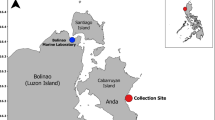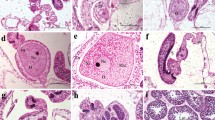Abstract
We document long-term effects of a simulated bleaching event on the reproductive output and offspring viability of the soft coral Lobophytum compactum. Corals were subjected to temperature and solar radiation treatments to produce both moderately (48–60%) and heavily (90–95%) bleached colonies. Although bleached colonies recovered their zooxanthellae within 10 to 18 weeks, impacts on reproductive output were significant for at least two annual spawning seasons. In the first year, both polyp fecundity and mean oocyte diameter were reduced and inversely correlated with the degree of bleaching, with complete failure of fertilization in the group of heavily bleached colonies. For moderately bleached soft corals, survival and growth of sexual offspring did not differ significantly from those of unbleached colonies. Although no further reductions in zooxanthellae densities in experimental soft corals were recorded throughout the subsequent second year, egg size and fecundity of the heavily bleached soft corals were still significantly reduced 20 months later. Severe bleaching clearly has long-term sub-lethal impacts, reducing overall reproductive output for at least two spawning seasons.
Similar content being viewed by others
Author information
Authors and Affiliations
Additional information
Accepted: 1 June 2000
Rights and permissions
About this article
Cite this article
Michalek-Wagner, K., Willis, B. Impacts of bleaching on the soft coral Lobophytum compactum. I. Fecundity, fertilization and offspring viability. Coral Reefs 19, 231–239 (2001). https://doi.org/10.1007/s003380170003
Issue Date:
DOI: https://doi.org/10.1007/s003380170003




